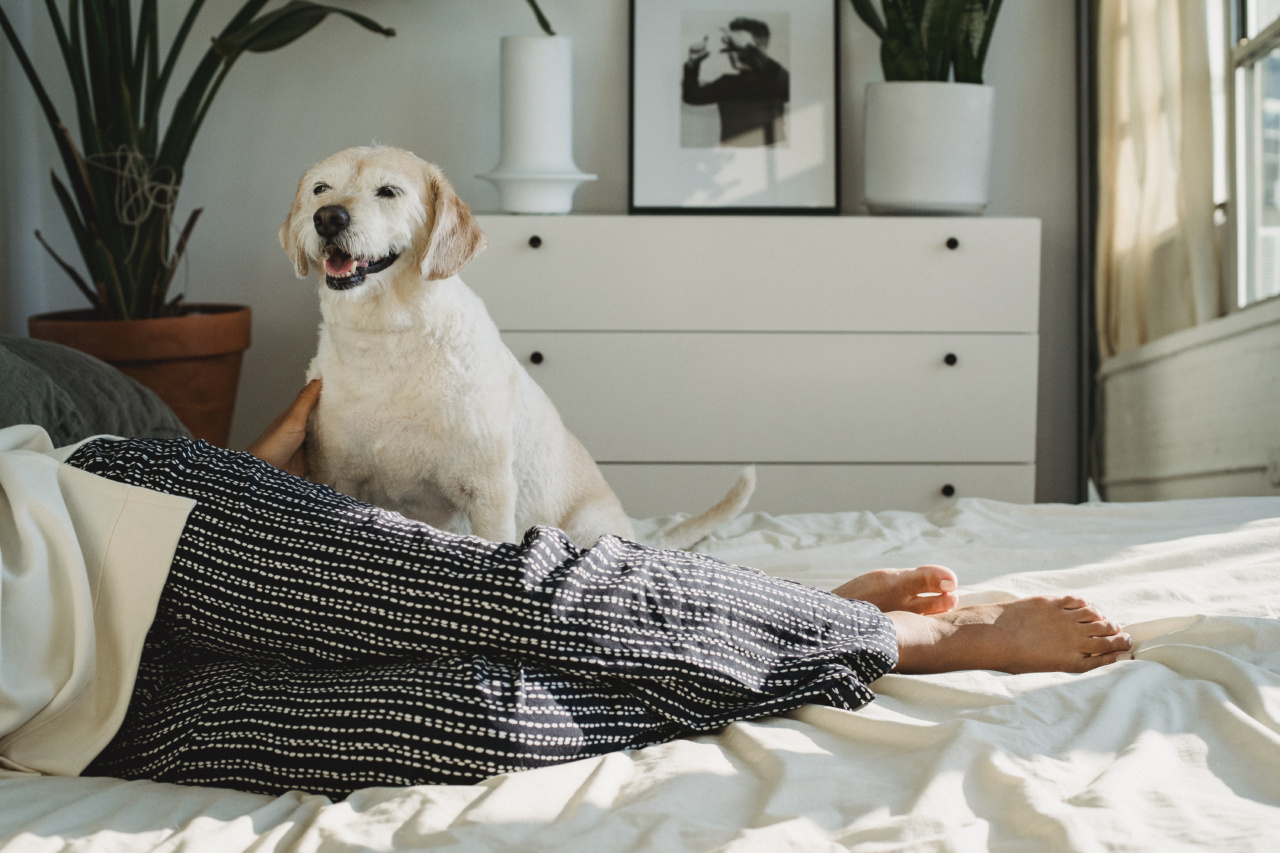Having a dog as a beloved member of the family often means they are given certain privileges, such as the freedom to roam around the house, cuddle on the couch, or sleep on the bed.
While many people enjoy sharing their sleeping space with their furry friends, there are several reasons why you might want to keep your dog off the bed:.
1. Hygiene and cleanliness
Let’s face it; dogs spend a significant amount of time outdoors, exploring all sorts of places. They can bring dirt, allergens, and even fleas or ticks into your bed.
Keeping your dog off the bed helps to maintain a cleaner and more hygienic sleeping environment for you.
2. Allergies and respiratory issues
If you or someone in your household suffers from allergies or respiratory problems, it may be best to keep your dog off the bed. Dogs can shed dander and fur that can trigger allergic reactions or breathing difficulties in sensitive individuals.
3. Disrupted sleep
While some people find comfort in having their dog snuggled up beside them, others may find it disruptive to their sleep. Dogs can take up space, snore, or move around during the night, causing discomfort or disturbances.
4. Establishing boundaries
Allowing your dog to sleep on the bed may blur the lines of boundaries within your household.
Inviting them onto the bed might give them the impression that they are equal in rank with you, potentially leading to behavioral issues or challenges in other areas.
5. Protecting the bed
Dogs may unintentionally damage your bedding by scratching or chewing on it. Keeping them off the bed can help preserve your bedding investment and extend its lifespan.
Methods to Keep Your Dog Off the Bed
If you’ve decided to keep your dog off your bed, here are some effective methods to accomplish that:.
1. Provide a comfortable alternative
Make sure your dog has a cozy and inviting bed or sleeping area of their own. Choose a bed that suits their size, age, and preferences. Fill it with soft blankets or cushions to make it more appealing than your bed.
2. Create boundaries with physical barriers
There are various physical barriers you can use to prevent your dog from accessing your bed. Consider using baby gates, pet gates, or playpen fences to restrict their access to the bedroom. By blocking their path, you establish clear boundaries.
3. Close the bedroom door
The simplest way to keep your dog off the bed is to keep the bedroom door closed. This straightforward method ensures that your dog understands the bedroom is off-limits.
4. Use positive reinforcement
Positive reinforcement techniques can be effective in training your dog to stay off the bed. Reward them with treats, praise, or their favorite toy whenever they choose to stay off the bed. Consistency and repetition are key to reinforcing this behavior.
5. Employ deterrents
Dogs dislike certain scents and textures. You can use this to your advantage by applying a pet-safe deterrent spray or placing double-sided tape or aluminum foil on the bed.
The unpleasant textures or smells will discourage your dog from jumping on the bed.
6. Practice consistent training
Training your dog to stay off the bed requires consistency and patience. Establish clear commands such as “off” or “bed,” and reinforce these commands by redirecting them to their own sleeping area.
With time and practice, your dog will learn to respect your boundaries.
7. Make the bed less appealing
Dogs are often attracted to their owners’ scent on the bed. Preventing access to your bed when it’s unoccupied can help break their attachment to it.
Additionally, washing your bedding frequently and using scent-neutralizing products can reduce their desire to be on the bed.
8. Try crate training
If your dog is crate trained, you can use this as a tool to keep them off the bed. Encourage them to sleep in their crate during the night by making it comfortable and cozy, offering rewards and positive reinforcement.
9. Seek professional help if needed
If your dog continues to defy your attempts to keep them off the bed, it might be worth seeking help from a professional dog trainer or animal behaviorist.
They can assess the situation, provide guidance, and tailor a training program specific to your dog’s needs.
10. Be patient and consistent
Changing your dog’s behavior takes time and consistency. It’s important to remain patient and not give in to your dog’s pleas to be on the bed. Consistency in enforcing your rules will help your dog understand what is expected of them.



























